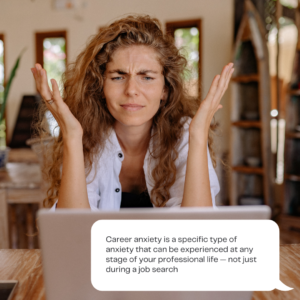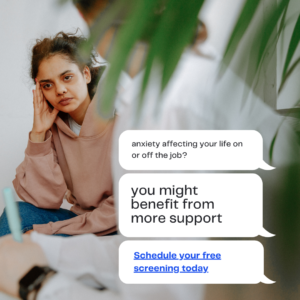It feels good to set a goal and achieve it. But there’s a much deeper connection between goal setting and self-esteem than you might realize, especially for those who struggle with self-doubts and negative self-talk. Here’s the good news: as you progress toward your goal, you can actually break that cycle of self-criticism, low self-esteem, fear of failure, and inertia.
As you commit to and work toward your goal, you’re also boosting your self-esteem in all kinds of important ways:
– motivation
– sense of purpose
– improved focus
Every small success you experience along the way releases positive hormones and builds your resiliency and your ability to deal better with any setbacks or emotional ups and downs. And you can’t beat that sense of satisfaction and achievement when you finally check that box – you did it! So, whatever your goal — starting a gym routine, saving money, finding a new friend group or hobby, or improving your grades –your journey starts with a strong inner voice telling yourself you can do it and that you deserve to succeed.
But if you struggle with low self-esteem, don’t let that stop you from going after a goal that matters to you. Self-worth is something you work on throughout your life. Just be extra aware, recognize when your negative self-talk is preventing you from making progress, and channel your inner cheerleader instead. Make a list of positive qualities and things you do well. If there’s a person in your life who lifts you up, reach out to them for support. With a positive mindset, you are ready to go to work! Here is a step-by-step guide to help you set, plan, and start achieving your goals.
What is your true ‘why’?
Before you start writing down or even thinking about your goals, you need to understand what you want to accomplish and why it matters to you. Think about your true ‘why’ as a word, feeling, or theme that you care about deeply – something that will affirm, motivate and reward your efforts.

For example, if your goal is to be financially independent and save money, then perhaps your true ‘why’ is ‘security’. Or if you want to make the world a better place by getting involved and volunteering, then your true ‘why’ could be ‘generosity’. A desire for more ‘confidence’ might drive you to set goals related to physical fitness. Think about what really matters deeply to you and set goals accordingly.
Your goals should align with how you want to feel in the end. If they don’t align or feel right, you won’t care as much about accomplishing them. Give yourself some time to think about your ‘why’ and then set your goals.
How to set realistic goals
Remember to keep your goals clear and concrete, using positive language: “I will” vs. “I won’t”. And try to create goals that play to your strengths.
1. Make your goal specific
Be specific when setting your goals. For instance, if you want to be more physically active, get into the details: “I’d like to work out at least twice a week at the gym for 3 months.” rather than a vague, easily procrastinated goal like “go to the gym.” Which goal would be more likely to encourage you to work out?
2. Set achievable goals
For example, if your goal is to get into an Ivy League school and your grades just aren’t up to their standards, you’re setting yourself up for disappointment. However, that doesn’t mean you won’t be able to attend a great college. It just means the Ivy League goal isn’t realistic. As you decide which goals to pursue, it’s good to know the difference between an ambitious yet realistic goal and a goal that isn’t achievable. The process of creating a plan to achieve your goal should help clarify whether or not your goal is realistic and reachable.
3. Plan for success

Now it’s time to get real and get detailed. Map out the decisions, actions, and habits that will make it easier to succeed. Think about possible barriers, and what might have to be changed or set in place in order to clear the way for you to reach your goal. And make your goal measurable: how will you define success?
Next, break down your goal into categories, and think about the action steps, tasks, milestones, and timeline that you will follow. Your plan is there to help you progress toward your goal, so as you move forward, rethink your action steps if you find they aren’t working for you. This is under your control – you can always revisit and revise your plans along the way.
4. Give yourself a deadline
Deadlines give you structure, allow you to plan, and create a sense of urgency, which can create momentum to help you reach your goal. Think about a realistic timeline that will allow you to successfully meet your goal while carrying on with day-to-day life.
5. Make yourself accountable
Don’t be shy about telling others what you want to achieve. By sharing your goals with someone who cares about you, you give yourself a 65% chance of success – and if you set up a weekly check-in with your ‘accountability buddy’, you raise your chances of success to 95%. When you share your goals, others can see and support your efforts — and celebrate with you when you accomplish them!
Try to minimize and eliminate temptations that might derail you. For instance, if you’ve set a goal to go out for a run at a certain time, set an alarm, get ready to go, and don’t get distracted by mindless scrolling or anything that might give you an excuse that “oh, now it’s too late.”
As you work toward your goal, pay attention to your emotions and state of mind, and try to curb any self-critical thoughts. This is your journey and it’s as much about positive mental health as it is about checking the box. You can do this – go for it!
Need more help?
If you or a loved one feel depressed or unmotivated to achieve their goals, consider talking to a mental health professional. Find a safe person and space in which to talk. The Bougainvilla House is here for you, with an understanding and welcoming environment for you and your family. Take that important first step and ask for help.
The Bougainvilla House also offers Parenting Workshops to provide tools and strategies that support healthy families and nurture future generations as they grow.
Call now to find support that works for you and your family: (954) 764-7337.






 manage your reaction. For example, many teachers are stressed because they care intensely about the success of their students. Make sure to acknowledge when caring is the source of your stress.
manage your reaction. For example, many teachers are stressed because they care intensely about the success of their students. Make sure to acknowledge when caring is the source of your stress.





